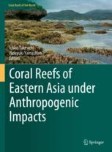Search
Search Results
-
Uncovering the Microbial Diversity of Two Exotic Calcareous Sponges
Sponges-associated microorganisms play important roles in their health and ecology; consequently, they may be crucial in the successful adaptation of...

-
Chemical and biological diversity of new natural products from marine sponges: a review (2009–2018)
Marine sponges are productive sources of bioactive secondary metabolites with over 200 new compounds isolated each year, contributing 23% of approved...

-
Studying Porifera WBR Using the Calcerous Sponges Leucosolenia
Sponges (Porifera), basal nonbilaterian metazoans, are well known for their high regenerative capacities ranging from reparation of a lost body wall...
-
Guidelines on Designing MicroRNA Sponges: From Construction to Stable Cell Line
Single microRNA (miRNA) can be inhibited using antagomiR which efficiently knocks down a specific miRNA. However, the effect is transient and often...
-
Bio-loggers inserted in intravaginal sponges, or subcutaneously, as tools to measure body temperature
The body temperature of animals can be measured by thermistors, thermocouples, or radiotelemetry devices that are implanted surgically under the...

-
Symbiont transmission in marine sponges: reproduction, development, and metamorphosis
Marine sponges (phylum Porifera) form symbioses with diverse microbial communities that can be transmitted between generations through their...

-
Microbiome of the freshwater sponge Ephydatia muelleri shares compositional and functional similarities with those of marine sponges
Sponges are known for hosting diverse communities of microbial symbionts, but despite persistent interest in the sponge microbiome, most research has...

-
Calcareous sponges (Porifera, Calcarea) from the Northeastern Brazilian coast: integrative taxonomy and support for the creation of a marine park
Calcarea corresponds to ~ 8% of the known sponge species richness and more studies are needed to reveal its diversity, distribution, and biology....

-
Sponges facilitate primary producers in a Bahamas seagrass system
Seagrass beds are important coastal ecosystems worldwide that are shaped by facilitative interactions. Consequently, it is important to identify...

-
Relationship between bacterial phylotype and specialized metabolite production in the culturable microbiome of two freshwater sponges
Microbial drug discovery programs rely heavily on accessing bacterial diversity from the environment to acquire new specialized metabolite (SM) lead...

-
Microbiome species diversity and seasonal stability of two temperate marine sponges Hymeniacidon perlevis and Suberites massa
BackgroundMarine sponges are diverse and functionally important members of marine benthic systems, well known to harbour complex and abundant...

-
Sponges associated with stylasterid thanatocoenosis (Cnidaria, Hydrozoa) from the deep Ross Sea (Southern Ocean)
In the Antarctic seas, where hard substrates are scarce, the presence of secondary bio-substrates formed by calcareous organisms is an essential...

-
3D Printed Scaffolds Manufactured with Biosilica from Marine Sponges for Bone Healing in a Cranial Defect in Rats
The inorganic part of marine sponges, called Biosilica (BS), presents an osteogenic potential and the ability of consolidating fractures. Moreover,...

-
Distribution and diversity of ROS-generating enzymes across the animal kingdom, with a focus on sponges (Porifera)
BackgroundReactive derivatives of oxygen (reactive oxygen species; ROS) are essential in signalling networks of all aerobic life. Redox signalling,...

-
Recruitment of deep-water corals and sponges in the Northwest Atlantic Ocean: implications for habitat distribution and population connectivity
Deep-water corals and sponges provide habitat complexity and shelter for many fauna, contributing to the health of deep-sea ecosystems. However,...

-
Succession and Spread of Coral Diseases and Coral-Killing Sponges with Special Reference to Microbes in Southeast Asia and Adjacent Waters
Corals and coral-associated organisms are threatened by repeated bleaching events and anthropogenic stresses, resulting in mass mortality and...
-
Fungicidal amphotericin B sponges are assemblies of staggered asymmetric homodimers encasing large void volumes
Amphotericin B (AmB) is a powerful but toxic fungicide that operates via enigmatic small molecule–small molecule interactions. This mechanism has...

-
What if… Sponges Originated 890 Million Years Ago? On the Emergence of Some Precursors of Animal Sentience
The recently described 890-million-year-old sponge fossil illuminates the early evolutionary path to the emergence of animal sentience. A sentient...
-
Association of a Skin Dressing Made With the Organic Part of Marine Sponges and Photobiomodulation on the Wound Healing in an Animal Model
The present study aims to characterize and to evaluate the biological effects of a skin dressing manufactured with the organic part of the Chondrilla...

